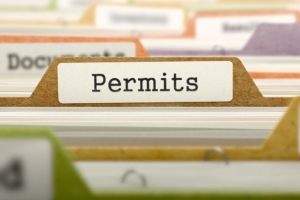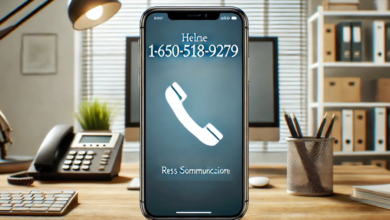Understanding Time Permitting: A Simple Guide

When it comes to managing your schedule, “time permitting” is an important phrase to know. This means that you do something if there is enough time to do it. For example, you might say, “We can go to the park, time permitting,” which means you’ll go to the park if you have time left after doing other things.
In busy lives, understanding it helps us plan better. It lets us know when we can fit in extra activities or complete tasks. Knowing how to use it can make your day go smoothly and help you get things done without feeling rushed.
What Does Time Permitting Mean?
When we talk about “time permitting,” we’re referring to doing something if there is enough time available. This phrase helps us decide if we can fit extra tasks into our day. For instance, if you finish your homework early, you might have time for a fun activity, it
It’s like a way of saying, “If we have time left after doing important things, we can do this extra thing.” This idea helps people manage their schedules better. Instead of rushing or feeling overwhelmed, you can plan to include extra activities based on your available time.
Knowing what it means helps in making plans that are flexible. If you finish everything on your list and still have some free moments, you can choose to do something extra. This way, you’re never caught off guard and always have a plan for your extra time.
How Time Permitting Helps You Plan Your Day
Using “time permitting” in your daily planning helps you make sure you don’t overload your schedule. It’s like checking if there’s room in your day for more activities. For example, you might plan to visit a friend, time permitting, after you finish your chores.
When you use this approach, you are being realistic about your time. It means you’re aware of your commitments and only add extra tasks if there’s time left. This helps you avoid feeling rushed or stressed about not completing everything.
With it you can prioritize your important tasks first. Once those are done, you can look at what else you might have time for. This method helps keep your day organized and manageable, so you can enjoy your activities without worrying about the time.
Time Permitting: A Guide for Kids
For kids, “time permitting” is a simple way to understand how to manage their activities. It means you do something extra if there’s time left after finishing your main tasks. For example, after doing your homework, you can play a game, it.
This idea helps kids learn how to plan their days better. By finishing important tasks first, you can then see what extra fun things you might have time for. It’s a way to enjoy more activities without feeling rushed or stressed.
When you use it you get to enjoy more activities while keeping up with your responsibilities. It’s like having a flexible schedule that adjusts based on what you’ve already done. This approach helps you make the most of your day in a balanced way.

Using Time Permitting to Manage Your Schedule
Managing your schedule with “time permitting” means making sure you have room for extra tasks if there’s time left. It’s a smart way to ensure you stay organized while also allowing for some flexibility. For example, you might plan to go for a walk, it, after your daily study time.
This approach helps keep your schedule from becoming too rigid. By including “time permitting” in your plans, you can adjust your day based on how much time you have. It helps you fit in extra activities without making your day too packed.
By using this method, you can prioritize important tasks first and then see if there’s time for additional activities. It makes your schedule more flexible and less stressful. You won’t have to worry about fitting everything in, as you’ll have a clear plan based on the time you have left.
When to Use Time Permitting in Your Plans
“Time permitting” is best used when you want to add extra activities into your plans. It’s a way of saying you will do something extra if you have enough time left after completing your main tasks. For example, you might visit a museum, it, if you finish your schoolwork early.
Using it helps you plan better by setting priorities. It ensures you focus on important tasks first before looking at extra activities. This way, you won’t be overwhelmed and can enjoy additional things without stress.
This method is especially useful when planning busy days. It allows you to have a clear idea of what’s important and what can be added if there’s extra time. It’s a practical approach to manage your schedule effectively and keep everything balanced.
The Importance of Time Permitting in Daily Life
Understanding the importance of “time permitting” helps you manage your daily tasks and activities. It’s a way to ensure you finish your main responsibilities before adding anything extra. For instance, you might read a book, time permitting, after completing your homework.
Using this approach helps you stay organized and avoid feeling rushed. By prioritizing important tasks first, you can better manage your time and add extra activities if there’s time left. It’s a method that helps keep your day balanced and stress-free.
In daily life, it allows you to make the most of your time. It helps you plan activities around your main tasks, ensuring you have time for everything you want to do. This approach keeps your schedule flexible and manageable.
Simple Tips for Time Permitting
To use “time permitting” effectively, start by making a list of your main tasks. This helps you focus on what’s most important. Once you’ve completed these tasks, you can look at what extra activities might fit into your remaining time.
Another tip is to set realistic goals for your day. This way, you can see if there’s time left for additional activities. It’s a good way to ensure you don’t overbook yourself and still have time for fun or relaxation.
Using reminders can also help with it. Setting alerts or writing notes can keep you on track with your tasks. Once your main responsibilities are completed, you’ll know exactly how much time you have left for extra activities.
How to Make Time Permitting Work for You
Making “time permitting” work for you involves planning your day with flexibility. Start by listing your main tasks and complete them first. Then, check if you have time left for additional activities. This approach helps you balance your responsibilities with extra fun.
Being realistic about your time is key. Set achievable goals and know how much time you need for each task. Once you have a clear idea, you can easily see if there’s room for extra activities, making your schedule more manageable.
Another way to make it work is to adjust your plans as needed. If something takes longer than expected, be flexible with your extra activities. This helps you stay on track while still enjoying your day without stress.
Time Permitting: What You Need to Know
“Time permitting” is a concept that helps you manage your schedule by adding extra tasks if there’s time left. It’s important to understand how to use this idea effectively. For example, if you finish your chores early, you can do an extra activity, it.
Knowing how to use time permitting involves planning your day with clear priorities. Complete your main tasks first, and then see if there’s time for additional activities. This helps you stay organized and ensures you have time for both responsibilities and fun.
Being aware of it helps in managing busy schedules. It allows you to fit in extra activities without overloading your day. By understanding this concept, you can make the most of your time and keep your day balanced.
How to Fit Extra Activities Using Time Permitting
To fit extra activities using “time permitting,” start by completing your main tasks. Once you’ve finished these, check how much time is left for additional activities. This approach helps you add extra fun without disrupting your main schedule.
Planning ahead is important. Set clear priorities and make a list of tasks. After finishing your main responsibilities, you can see if there’s time to fit in extra activities, like playing a game or going for a walk.
Being flexible with your plans also helps. If something takes longer than expected, adjust your extra activities accordingly. This ensures that you stay on track and can enjoy additional tasks without feeling rushed.
Understanding Time Permitting for Better Planning
Understanding “time permitting” helps you plan your day more effectively. It’s a way to ensure you complete your main tasks first and then look for extra time. For example, after finishing your homework, you might read a book, time permitting.
This concept helps in organizing your day with a clear structure. By prioritizing important tasks and checking for extra time, you can fit in additional activities without feeling overwhelmed. It makes your schedule more flexible and manageable.
Another benefit is that it reduces stress. Knowing that you’ll only add extra tasks if there’s time left helps you focus on your main responsibilities. This way, you can enjoy your day without the pressure of fitting everything in.
Time Permitting and Your Busy Schedule
When dealing with a busy schedule, “time permitting” helps you manage your tasks and activities effectively. It means completing your main responsibilities first and then seeing if there’s time left for extra activities. This approach keeps you organized and less stressed.
Having a busy schedule doesn’t mean you can’t enjoy extra activities. By using time permitting, you can fit in additional fun or relaxation after finishing your main tasks. It helps you balance your responsibilities with leisure time.
Planning with it involves setting priorities and being flexible. Complete your essential tasks and then check if you have time for extra activities. This method ensures you stay on track while still having room for enjoyment.
When Time Permitting Can Change Your Plans
“Time permitting” can change your plans by allowing flexibility in your schedule. If you complete your main tasks earlier than expected, you might have time for additional activities. This flexibility helps you make the most of your day.
For instance, if you finish your homework quickly, time permitting, you might go for a bike ride. This approach lets you adjust your plans based on the time you have left. It’s a useful way to fit in extra activities without feeling rushed.
Being flexible with it means you can adapt to changes in your schedule. If something takes longer than planned, you can adjust your extra activities accordingly. This ensures you stay on track while still enjoying your day.
The Benefits of Time Permitting in Planning
Using “time permitting” in planning offers several benefits. It helps you manage your schedule by completing main tasks first and then fitting in extra activities if there’s time left. This approach keeps your day organized and balanced.
One benefit is that it reduces stress. By focusing on important tasks and then adding extra activities, you avoid feeling overwhelmed. This method ensures you complete your main responsibilities while still having time for fun.
Another advantage is that it provides flexibility. If something takes longer than expected, you can adjust your plans and fit in extra activities based on the time available. This makes your schedule more adaptable and manageable.
How to Decide What to Do Time Permitting
Deciding what to do “time permitting” involves completing your main tasks first and then looking for extra activities. Once you finish your essential responsibilities, check how much time you have left. This helps you choose activities that fit into your remaining time.
For example, after finishing your homework and chores, you might decide to play a game, it. It’s a way to make the most of your day by including fun activities when there’s time left.
Another tip is to make a list of potential activities. This way, you can quickly choose something to do based on the time available. It helps you stay organized and ensures you enjoy extra activities without disrupting your main schedule.
Examples of Time Permitting in Everyday Life
“Time permitting” is used in many everyday situations to manage our activities. For example, you might finish your homework and then watch a movie, time permitting. This shows how extra activities can fit into your day if you have time left.
Another example is planning family outings. If you complete your household chores early, you might have time to go to the park, . It’s a way to enjoy more activities without feeling rushed.
Using time permitting helps in various daily tasks, like fitting in exercise after finishing work or completing projects. It allows you to add extra fun or relaxation based on the time you have left.
Making the Most of it
Making the most of “time permitting” involves using your available time wisely. Start by completing your main tasks and then look at what extra activities you can fit in. This approach helps you enjoy more activities without disrupting your main schedule.
Planning ahead is key. By setting priorities and knowing how much time you need for each task, you can better manage your day. Once you finish your essential responsibilities, you can see what extra activities you have time for.

Time Permitting: A Simple Strategy for Success
“Time permitting” is a simple strategy for success in managing your daily activities. It means completing your main tasks first and then fitting in extra activities if there’s time left. This approach helps you stay organized and balanced.
Starting with your essential tasks ensures that you complete important responsibilities. Once these are done, you can look at what additional activities you can do based on the time available. It helps you make the most of your day without feeling overwhelmed.
This strategy also allows for flexibility. If something takes longer than expected, you can adjust your extra activities accordingly. It helps you stay on track while still enjoying additional tasks.
Why it is Important for Kids
For kids, “time permitting” is important because it helps in managing their activities and responsibilities. It means finishing homework or chores first and then looking for time to play or do extra fun activities. This approach helps kids stay organized and balanced.
Understanding time permitting teaches kids to prioritize their tasks. By focusing on essential responsibilities first, they can enjoy extra activities once those are completed. It helps in creating a structured routine that includes both work and play.
Time permitting also helps in reducing stress. Kids can manage their day better by knowing they have time for fun after completing their main tasks. It makes their schedule more flexible and enjoyable.
Time Permitting Tips for Busy Families
For busy families, “time permitting” tips help in managing schedules effectively. Start by completing essential tasks and then look at what extra activities you can fit in if there’s time left. This approach keeps your family’s day organized and balanced.
One tip is to plan ahead. By setting priorities for each family member’s tasks, you can better manage your day. Once the main responsibilities are done, you can enjoy extra activities together, it.
Another tip is to use a family calendar. This helps everyone see what tasks need to be completed and when there’s time for extra activities. It keeps your family’s schedule organized and helps in balancing work and fun.
How it Can Help with Homework
“Time permitting” can help with homework by allowing extra time for studying or relaxation after completing main assignments. Once homework is done, time permitting, you can use any remaining time for review or fun activities.
Using time permitting helps in managing homework effectively. Start by focusing on completing your assignments. Once they are finished, check if there’s time left for additional study or relaxation, making your homework routine more balanced.
Planning with time permitting also reduces stress. It ensures that you finish your homework first and then look for extra time to relax or enjoy activities. This approach helps in creating a structured and stress-free study routine.
Time Permitting: Planning for Fun Activities
“Time permitting” is useful for planning fun activities. It means you complete your main tasks and then see if there’s time left for extra enjoyment. For example, after finishing chores, you might have time for a movie, time permitting.
Planning fun activities with time permitting helps in balancing work and leisure. By focusing on essential tasks first, you can better manage your day and fit in extra fun if there’s time available.
This approach also helps in avoiding stress. Knowing you’ll have time for fun after completing important tasks makes your schedule more flexible and enjoyable. It ensures you have a balanced day with both responsibilities and relaxation.
Time Permitting and Effective Task Management
“Time permitting” is key to effective task management. It involves completing your main tasks first and then using any extra time for additional activities. This method helps in staying organized and managing your tasks more efficiently.
Start by prioritizing your essential responsibilities. Once these are completed, check if there’s time left for extra tasks or activities. This approach helps in balancing your schedule and ensuring that all tasks are managed effectively.
Being flexible with time permitting also helps in adjusting your plans if needed. If something takes longer than expected, you can adjust your extra activities accordingly, keeping your schedule organized and manageable..
A Guide for Better Daily Routines
“Time permitting” is a guide for creating better daily routines. It means completing your main tasks first and then fitting in extra activities if there’s time left. This approach helps in structuring your day and balancing work and leisure.
By following a time permitting approach, you can ensure that essential tasks are done before looking for extra activities. It helps in managing your daily routine more effectively and making the most of your available time.
This method also provides flexibility. If you finish tasks earlier than expected, you can add extra activities to your day, time permitting. It keeps your routine balanced and enjoyable.
Conclusion
Using “time permitting” in your day can make things much easier and more fun. By finishing your main tasks first, you can see if you have extra time for activities you enjoy. It helps you stay organized and make the most of your day without feeling rushed. Whether it’s finishing homework or doing chores, time permitting lets you add a bit of fun or relaxation when there’s time left.
Overall, time permitting is a simple way to balance your responsibilities and your leisure time. It helps you plan your day better and ensures you enjoy both your main tasks and any extra activities. So, next time you plan your day, remember to use time permitting to make everything fit just right and enjoy a well-rounded, fun day!



